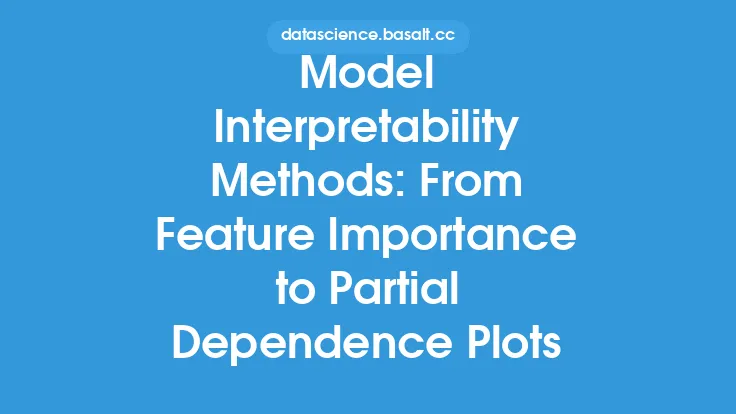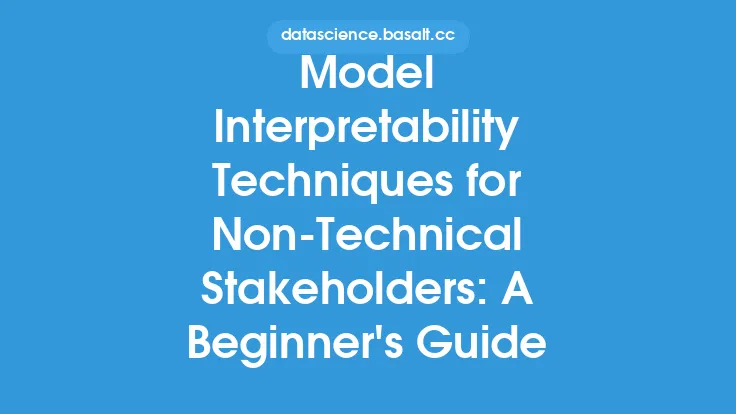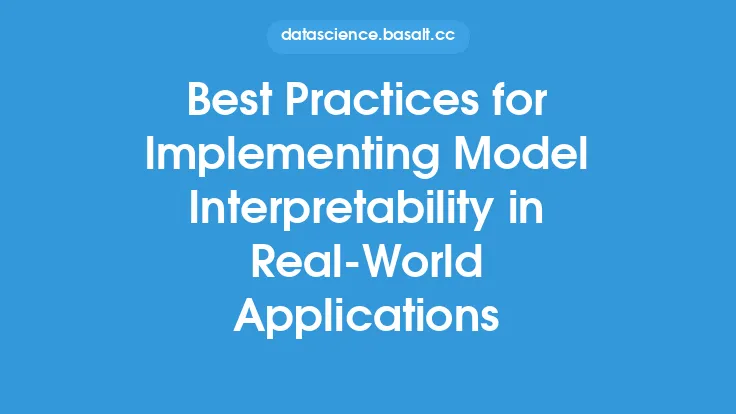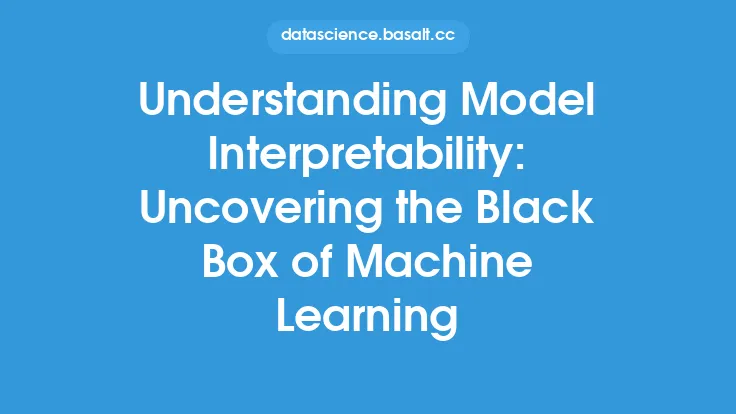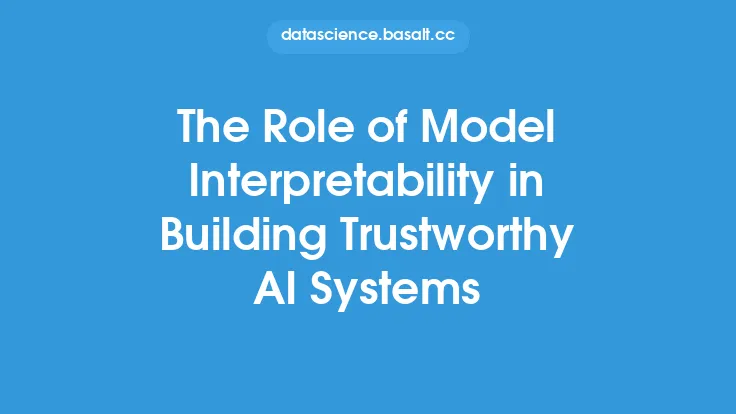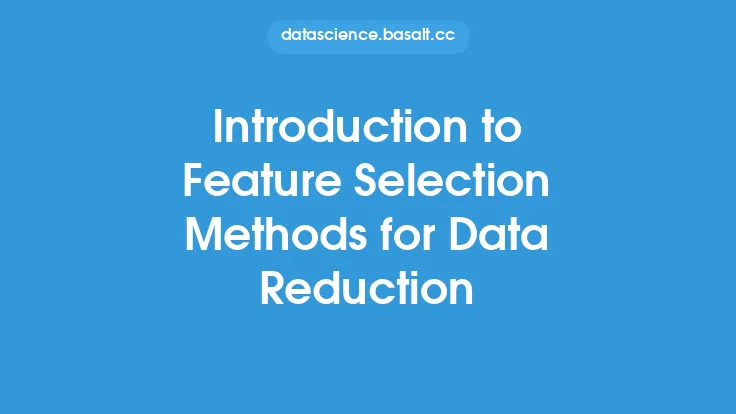Model interpretability is a crucial aspect of machine learning, as it enables us to understand the decision-making process of complex models. One approach to achieving model interpretability is through model-agnostic methods, which can be applied to any machine learning model, regardless of its type or architecture. In this article, we will delve into the world of model-agnostic interpretability methods, exploring their principles, techniques, and applications.
What are Model-Agnostic Interpretability Methods?
Model-agnostic interpretability methods are techniques that can be used to interpret any machine learning model, without requiring access to the model's internal workings or architecture. These methods are designed to be model-agnostic, meaning they can be applied to any type of model, including linear models, decision trees, random forests, neural networks, and more. This makes them particularly useful when working with complex or proprietary models, where access to the model's internal workings may be limited.
Principles of Model-Agnostic Interpretability
Model-agnostic interpretability methods are based on several key principles. Firstly, they rely on the idea of treating the model as a black box, where the internal workings of the model are not accessible or relevant. Instead, these methods focus on analyzing the model's inputs and outputs, using techniques such as perturbation analysis, feature importance, and partial dependence plots. Secondly, model-agnostic methods are designed to be model-agnostic, meaning they can be applied to any type of model, without requiring modifications or access to the model's internal workings.
Techniques for Model-Agnostic Interpretability
There are several techniques that can be used for model-agnostic interpretability, including:
- Perturbation Analysis: This involves analyzing how the model's predictions change when the input data is perturbed or modified. By analyzing the effects of these perturbations, we can gain insights into which features are most important for the model's predictions.
- Feature Importance: This involves assigning a score to each feature, indicating its importance for the model's predictions. This can be done using techniques such as permutation feature importance or SHAP values.
- Partial Dependence Plots: These plots show the relationship between a specific feature and the model's predictions, while controlling for the effects of other features.
- SHAP Values: SHAP (SHapley Additive exPlanations) values are a technique for assigning a value to each feature for a specific prediction, indicating its contribution to the outcome.
- LIME (Local Interpretable Model-agnostic Explanations): LIME is a technique for generating interpretable models that are locally faithful to the original model, allowing us to understand the model's behavior in a specific region of the input space.
Applications of Model-Agnostic Interpretability
Model-agnostic interpretability methods have a wide range of applications, including:
- Model debugging: By analyzing the model's behavior and identifying potential issues, we can debug and improve the model's performance.
- Model selection: By comparing the performance and interpretability of different models, we can select the best model for a given task.
- Model deployment: By providing insights into the model's behavior and decision-making process, we can increase trust and confidence in the model's predictions.
- Regulatory compliance: In some industries, such as finance and healthcare, regulatory requirements demand that models be interpretable and explainable. Model-agnostic interpretability methods can help meet these requirements.
Challenges and Limitations
While model-agnostic interpretability methods offer many benefits, there are also several challenges and limitations to consider. For example:
- Computational complexity: Some model-agnostic methods, such as perturbation analysis, can be computationally intensive and require significant resources.
- Interpretability-accuracy tradeoff: In some cases, model-agnostic methods may sacrifice accuracy for interpretability, which can be a challenge in applications where high accuracy is critical.
- Feature interactions: Model-agnostic methods may struggle to capture complex feature interactions, which can be important for understanding the model's behavior.
Future Directions
As machine learning continues to evolve and become increasingly complex, the need for model-agnostic interpretability methods will only continue to grow. Future research directions may include:
- Developing more efficient and scalable methods: As models become larger and more complex, there is a need for more efficient and scalable interpretability methods.
- Improving feature interaction capture: Developing methods that can capture complex feature interactions will be critical for understanding the behavior of complex models.
- Integrating model-agnostic methods with other interpretability techniques: Combining model-agnostic methods with other interpretability techniques, such as model-based methods, may provide a more comprehensive understanding of the model's behavior.
Conclusion
Model-agnostic interpretability methods offer a powerful approach to understanding the behavior of complex machine learning models. By treating the model as a black box and analyzing its inputs and outputs, these methods can provide insights into the model's decision-making process, without requiring access to the model's internal workings. As machine learning continues to evolve, the development of more efficient, scalable, and effective model-agnostic interpretability methods will be critical for ensuring the transparency, trustworthiness, and reliability of complex models.
